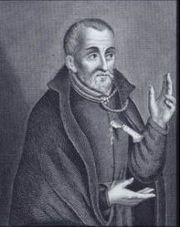Pope Francis on Saturday receives those taking part in the International Meeting “Evangelii Gaudium: Reception and Perspectives. The “Church which goes forth"”. Over the last three days participants including Bishops, religious and lay people from all over the world have been gathered in the Vatican to discuss the Pope’s Apostolic Exhortation six years on from its publication.
“I would like to say very simply: the joy of the Gospel springs from the encounter with Jesus.” Those were the Pope’s words on Saturday in the newly restored Hall of Benedictions in the Vatican.
Speaking to participants taking part in this International Meeting organized by the Pontifical Council for the Promotion of the New Evangelization, he said, "We need a free and simple Church, which does not think of looking good, of convenience and of entrances, but outward looking ".
The need to proclaim the Gospel arises spontaneously
“It is when we encounter the Lord that we are flooded with that love of which he alone is capable”. At that point, Pope Francis went on to say, “the need to proclaim the Gospel arises spontaneously and becomes irrepressible.”
“This is how evangelization began, on Easter morning”, the Pope explained, “with a woman, Mary Magdalene who, after meeting the risen Jesus, the Living One, evangelized the Apostles.”
“The experience of so many people today is not far from that of Mary of Magdala. Nostalgia for God, for an infinite and true love, is rooted in the heart of every man”, he said.
The Pope stressed that, “to live you need the God of love.” If that love was constantly in our hearts, he added, we would not breathe indifference or be wrapped up in a culture of consumerism.
Those who evangelize, stressed the Pontiff, “can never forget that they are always on the road, searching with others.”
Follow new paths
During his address, Pope Francis said we must not “hold back our fear of making mistakes and our fear of following new paths.”
“Our poverties are not obstacles”, he commented, “but precious instruments, because God's grace loves to manifest itself in weakness”.
Concluding his speech, the Pope said that the first Christians, who everyone was against and who were persecuted for their faith should be our guide.
We should, “not be saddened by things that are not going well, by labours, by misunderstandings: they are small things in the face of "the sublimity of the knowledge of Christ Jesus our Lord", Pope Francis advised.
“Let us not allow ourselves to be infected by the defeatism according to which everything goes wrong”, but instead, “let us invoke its author every day, the Holy Spirit, who makes life a love story with God.”


